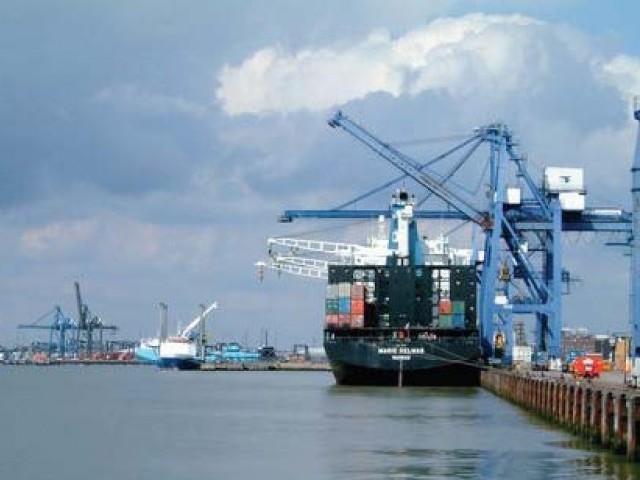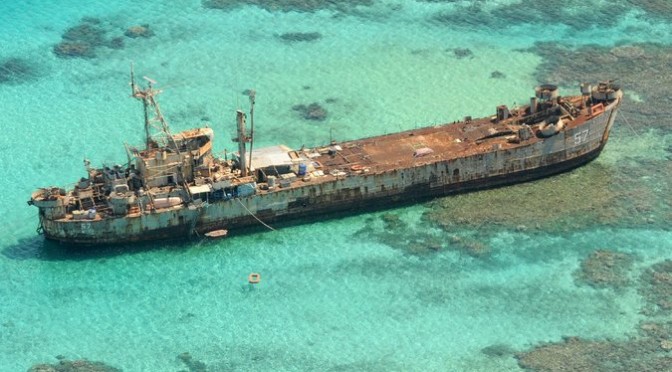This article originally featured on Lawfare. It may be read in its original form here.
By Raul “Pete” Pedrozo and James Kraska
The United States has been unable to synchronize successful air and sea freedom of navigation (FON) operations in the South China Sea with an erratic diplomatic message and a legal case that is too clever by half. Our colleagues Bonnie Glaser and Peter Dutton tried to reconnect these dimensions when they wrote in the The National Interest that while the administration has not done a “stellar job of explaining its actions,” the U.S. approach was still a sophisticated signaling mechanism. But their laudable effort to square the circle is not supported by the law of the sea.
Here’s why.
The past two FON operations in the South China Sea – the USS Lassen (DDG 82) surface navigation on October 27 and the flight of B-52s on November 8-9 – are models in how to squander flawless operational execution with confused, inconsistent, and ultimately damaging messaging that in some ways left the United States in a worse position than it would have been had it not done the operations.
After more than a month of dithering, the United States ordered the USS Lassen to challenge something – many are still unsure what – in the South China Sea. Some American officials characterized the operation as “innocent passage,” while others described it as “not innocent passage.” As confusion over the true nature of the FON challenge mounted, Senator John McCain requested the Department of Defense to “publicly clarify…the legal intent behind this operation.” Just days later, the U.S. did it again. Air Force B-52 bombers from Guam overflew the South China Sea. A U.S. official told The Hill that the aircraft did fly within 12 nm of China’s artificial islands, whereas another U.S. official said it did not. The confusion in both cases appears to be a mixture of politics combined with a lack of understanding of the law of the sea, presenting the United States with two unforced errors that should not be repeated.
The legal implications of the Lassen operation are inexplicable to this day. The Lassen could not have transited near Subi Reef in innocent passage because the feature is a low-tide elevation (LTE) that does not generate a territorial sea. High seas freedoms apply around low-tide elevations. Although Subi Reef is a an LTE, it is located within 12 nautical miles (nm) of Sandy Cay, an uninhabited rock that is entitled to a 12 nm territorial sea. Under article 13 of UNCLOS, an LTE located within the 12 nm territorial sea of a “mainland or island” may generate a territorial sea as though it were itself a rock. Accordingly, Glaser and Dutton conclude that Subi Reef was used “as a baseline to ‘bump out’ the territorial sea” of Sandy Cay. Under this theory, the USS Lassen was compelled by law to transit the territorial sea of Sandy Cay/Subi Reef in innocent passage.
There are four reasons why this rationale is unsupported by the law of the sea. First, article 13 of UNCLOS clearly states that an LTE within 12 nm of a “mainland or island” may extend out the territorial sea of the primary feature as though it were a rock. This is called a “parasitic” LTE, since its territorial sea depends on an adjacent mainland or island. But Sandy Cay is neither a mainland nor an island – it is a rock, so it may not be used by Subi Reef to generate a territorial sea.
Our colleagues appear to suggest that “mainland or island” includes mere rocks – that islands are just a form of rock. This argument confuses the text in Article 121 on the regime of islands, which forms Part VIII of the Convention and addresses what features are entitled to an exclusive economic zone (EEZ) with the rules in Part II on the territorial sea. Islands are naturally formed areas above water at high tide [Article 121(1)]. Islands are entitled to the full suit of zones of sovereignty, sovereign rights, and jurisdiction [Article 121(2)]. All that Article 121(3) says is that “rocks which cannot sustain human habitation or an economic life of their own” are not entitled to an EEZ or continental shelf. This text does not mean that islands are simply a type of rock – they are not and to make this argument is a circular reading that defies the negotiating history of the convention that sought to distinguish rocks from islands, as well as common sense that would have the two distinct words imbued with two discrete meanings.
Furthermore, the feature of one country cannot be used to generate maritime entitlements for a feature of another country. The only way for Subi Reef to be a parasitic LTE and have a territorial sea generated from Sandy Cay’s territorial sea is if the same country has lawful sovereign title to both features. Is the United States ceding both features to China?
Second, perhaps more fundamentally, no feature in the Spratly Islands, including Subi Reef, has a territorial sea. None. UNCLOS Article 3 allows states to “establish” a territorial sea – it is not automatic. Neither China nor any other claimant has established a territorial sea around a feature in the Spratly Islands. The law of the sea requires affirmative action by a sovereign state – China has not done so, so why does the United States appear to recognize (and therefore encourage) such action? There is no territorial sea around Subi or any other Chinese occupied feature, and therefore no purported requirement in Chinese law for prior consent of transit for the Lassen to challenge. Whether U.S. ships or aircraft stay beyond or transit within 12 nm of any these features is legally immaterial – none of them have a territorial sea.
Third, in order for a rock to generate a territorial sea it must be under the sovereignty of a coastal state. The United States does not recognize any country as having sovereignty over the features occupied or claimed by China, and in fact China has the weakest claim to the features of any nation in the region. No country recognizes China’s claim of sovereignty over any Spratly feature. Consequently, even if China declared a territorial sea around one or more feature, which it has not, the declaration would be legally nugatory. It would be the same as the United States declaring a territorial sea around Antarctica – no other state would recognize it. So why does the United States appear to recognize Chinese sovereignty over any of these features by trying to challenge provisions of Chinese law that even China has refrained from imposing?
Fourth, Glaser and Dutton suggest the Lassen challenged China’s law that purports to require prior notification for innocent passage in its territorial sea. Yet the operation appears to have been leaked to the media by a U.S. official the day before it was conducted, giving de facto notice – probably in a vain effort to “reduce tension” over the transit. That move undermined the U.S. legal case and created operational risk. It was not a coincidence that China’s maritime militia was already in position to harass the Lassen when the U.S. warship approached Subi Reef – potentially placing the security of the mission and the lives of U.S. Sailors at risk.
So did the FON operations challenge anything at all? Yes, but not what the United States or outside observers have claimed. Both the Lassen and the B-52s challenged China’s ubiquitous nine-dashed line claim to “indisputable sovereignty” over the South China Sea. Of course nobody, including our interlocutors in Beijing, have any idea what China’s preposterous claims mean in terms of the law of the sea. The difficulty in trying to fit U.S. FON operations into the prism of the law of the sea – combined with a lack of understanding of the law of the sea – has driven U.S. officials and pundits bananas. This falls into the trap laid by China, which has, at least since 1995, intentionally used confusion and ambiguity over its maritime claims in the South China Sea as a strategic weapon. It would be far better for the United States to continue to operate freely, persistently, and without the hand-wringing and drama, with ships on the surface, submarines under the water, and aircraft in overflight of the South China Sea, within and beyond 12 nm of all the features in the region.
Raul “Pete” Pedrozo is Deputy General Counsel for the Defense POW/MIA Accounting Agency (DPAA). Previously he was a Professor of International Law in the Stockton Center for the Study of International Law at the U.S. Naval War College, where he now serves as a Non-Resident Scholar.
James Kraska is Howard S. Levie Professor of International Law at the Stockton Center for the Study of International Law, U.S. Naval War College, Distinguished Fellow at the Law of the Sea Institute, University of California at Berkeley School of Law, and Senior Fellow, Center for Oceans Law and Policy, University of Virginia School of Law.







